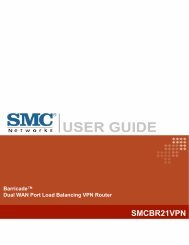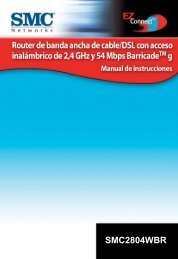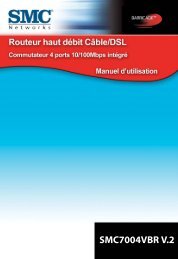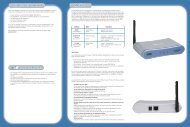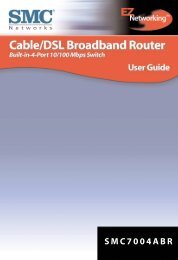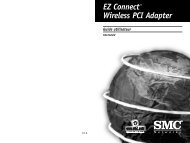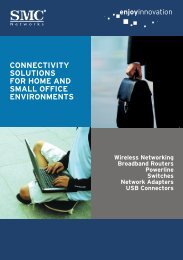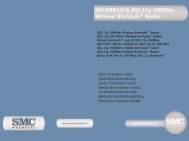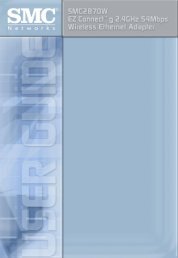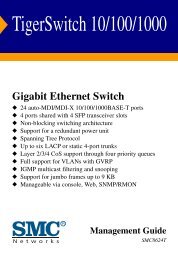6724L3 1-a.book - SMC
6724L3 1-a.book - SMC
6724L3 1-a.book - SMC
Create successful ePaper yourself
Turn your PDF publications into a flip-book with our unique Google optimized e-Paper software.
Connecting Network Devices<br />
CHAPTER 4<br />
MAKING NETWORK<br />
CONNECTIONS<br />
The TigerSwitch 10/100 may be connected to 10 or 100 Mbps network<br />
cards in PCs and servers, as well as to hubs and switches. It may also be<br />
connected to remote devices using the optional fiber optic modules<br />
Twisted-Pair Devices<br />
Each device requires a shielded or unshielded twisted-pair (STP or UTP)<br />
cable with RJ-45 connectors at both ends. For 1000BASE-T connections,<br />
Category 5, 5e, or 6 cable is required, for 100BASE-TX Category 5 cable is<br />
required; for 10BASE-T, Category 3 or better cable can be used.<br />
Cabling Guidelines<br />
A twisted-pair connection between two ports must have a crossover of the<br />
transmit and receive wires to be able to function. This crossover can be<br />
implemented in either of the ports, or in the cable connecting them.<br />
Network card ports in PCs and servers do not contain an internal wiring<br />
crossover, these are known as straight-through (MDI) ports. Therefore,<br />
most switch and hub ports implement a built-in crossover - known as fixed<br />
crossover (MDI-X) ports - so that they can be connected to PCs and<br />
servers using standard straight-through cable. Some switches and hubs also<br />
have an MDI port, so that they can connect to another switch’s/hub’s<br />
4-1



